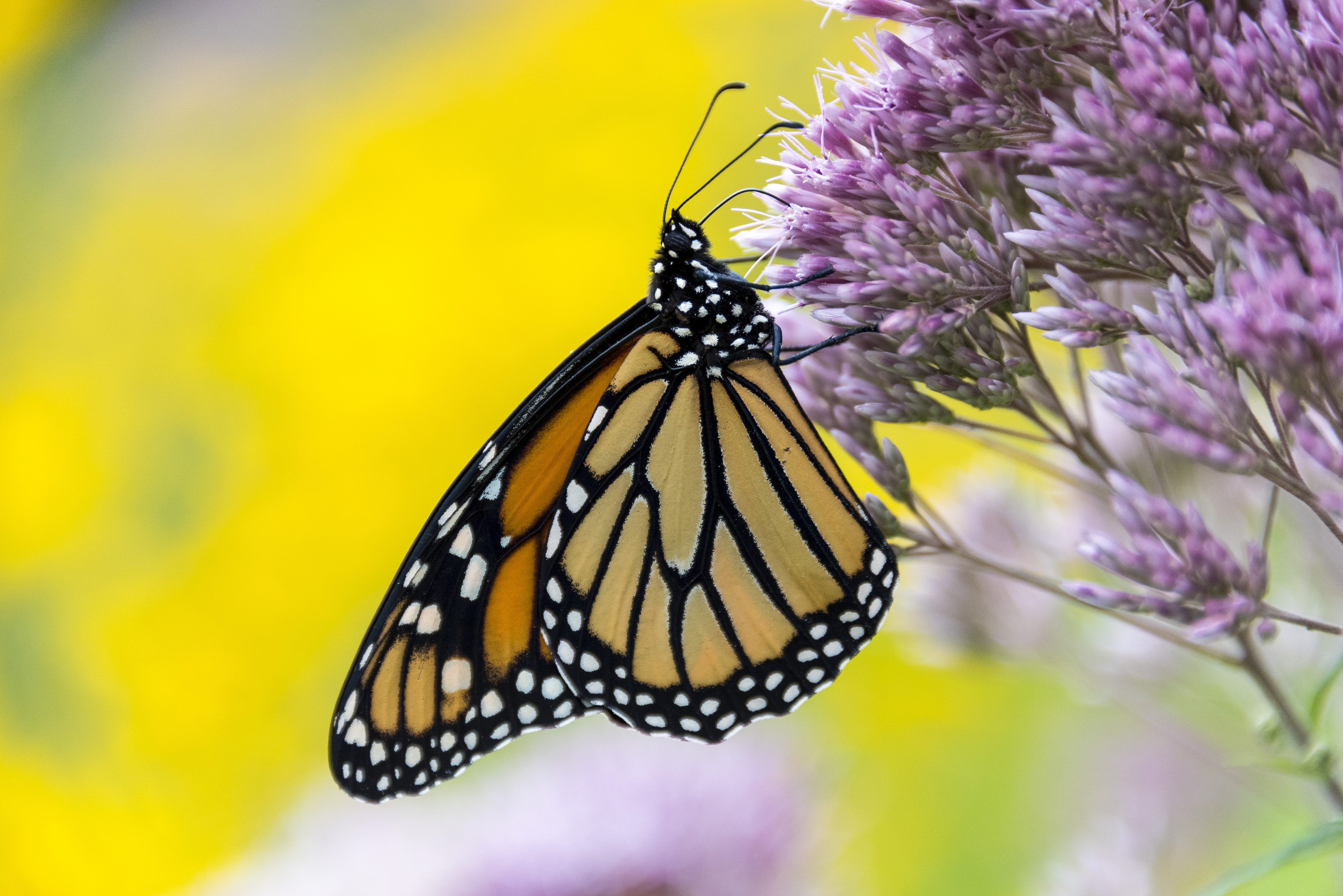30
May
U.S. Fish and Wildlife Service To Consider Monarch Butterfly Endangered Status, Amid Staggering Declines and Threat of Legal Action
 (Beyond Pesticides, May 30, 2019) Last week, the U.S. Fish and Wildlife Service (FWS) agreed to a 2020 deadline for reaching a decision on protection status for monarch butterflies under the Endangered Species Act. This agreement comes nearly five years after the filing of a petition by conservationists with the Center for Biological Diversity and Center for Food Safety led to the launch of an ongoing status review in 2014. While FWS deliberates, monarch butterflies continue their staggering, decades-long population decline, perhaps for the last of their decades.
(Beyond Pesticides, May 30, 2019) Last week, the U.S. Fish and Wildlife Service (FWS) agreed to a 2020 deadline for reaching a decision on protection status for monarch butterflies under the Endangered Species Act. This agreement comes nearly five years after the filing of a petition by conservationists with the Center for Biological Diversity and Center for Food Safety led to the launch of an ongoing status review in 2014. While FWS deliberates, monarch butterflies continue their staggering, decades-long population decline, perhaps for the last of their decades.
In the 1990s, the eastern monarch population numbered nearly one billion butterflies, and the western population numbered more than 1.2 million. Last year’s winter counts recorded around 93 million eastern monarchs and fewer than 200,000 western monarchs. That loss is “so staggering that in human-population terms it would be like losing every living person in the United States except those in Florida and Ohio,” Tierra Curry, a senior scientist at the Center for Biological Diversity, said in a statement to Live Science. Recent studies project that if current trends continue, both eastern and western monarch populations face migratory collapse within the next 20 years.
FWS is no stranger to the threats facing monarch butterflies. A 2017 study conducted by FWS on the butterfly’s dwindling population indicated that western monarchs have an extinction risk of 86% within the next 50 years. Within only 20 years, the risk is still 72%. “This study doesn’t just show that there are fewer monarchs now than 35 years ago,” said study author Cheryl Schultz, PhD, an associate professor at Washington State University Vancouver. “It also tells us that, if things stay the same, western monarchs probably won’t be around as we know them in another 35 years.”
Monarchs have lost an estimated 165 million acres of breeding habitat in the United States to herbicide spraying and development. Their caterpillars only eat milkweed, but the plant has been devastated by increased herbicide spraying in conjunction with corn and soybean crops genetically engineered to tolerate direct spraying with herbicides. In addition to herbicides, monarchs are threatened by neonicotinoid insecticides that are toxic to young caterpillars.
“Monarch butterflies clearly warrant protection under the Endangered Species Act, and we urge the Service to propose them for listing by the end of next year,” said George Kimbrell, legal director at the Center for Food Safety.
Monarchs are not alone among butterflies, pollinators, or more broadly, insects, facing imminent risk of population collapse and ultimate extinction if the status quo of pesticide use continues. As documented in the 2019 study, Worldwide Decline of the Entomofauna, in a study of 576 species of butterflies in Europe, researchers found that 80% of species are negatively impacted by herbicide and pesticide use. A California study of butterfly populations monitored from 1972-2012 captured a 65% drop in species counts beginning sharply in 1997, following the introduction of neonicotinoid insecticides to the state in 1995 (Forister et al., 2016).
Insecticides and herbicides both play a critical role in driving monarch butterfly and other insect declines. According to the 2019 review,
In terms of toxicity, insecticides are by far the most toxic to all insects and other arthropods, followed by fungicides but not herbicides (Mulé et al., 2017; Sánchez-Bayo and Goka, 2014). Herbicides, however, reduce the biodiversity of vegetation within the crops and in surrounding areas through drift (Egan et al., 2014) and runoff, thus impacting indirectly on the arthropod species that depend upon wild plants, which either disappear completely or decline significantly in numbers (Goulet and Masner, 2017; Marshall et al., 2003). Thus, the application of herbicides to cropland has had more negative impacts on both terrestrial and aquatic plants and insect biodiversity than any other agronomic practice (Hyvonen and Salonen, 2002; Lundgren et al., 2013).
While specialist losses are alarming, losses of generalist species are even more so. Generalist pollinator species such as the peacock butterfly and v-moth have experienced major declines in the last half century. Once-ubiquitous freshwater generalists (among them stoneflies, caddisflies, mayflies and dragonflies) are rapidly disappearing from North American and European waterways. Such generalist declines signal a systemic, chemical-induced problem that extends beyond niche habitat loss.
The evidence implicating pesticide use in the loss of insect biodiversity is both astounding and unsurprising. Insecticides kill insects, often indiscriminately and with devastating consequences for biodiversity, ecosystem stability, and critical ecosystem services. Herbicides and chemical fertilizers extinguish invaluable habitat and forage critical to insect survival. Taken together, insecticides, fungicides, herbicides and chemical fertilizers make large and growing swaths of land unlivable for vast numbers of insect species and the plants and animals they sustain.
Beyond Pesticides holds the position that toxic pesticides can be eliminated in organic land management systems, and that pesticide reduction is not sufficient in the face of the escalating crisis. Join Beyond Pesticides in advocating for proven, least-toxic practices that do not harm irreplaceable wildlife. For additional steps you can take to protect monarchs and other pollinators, see Beyond Pesticides’ BEE Protective webpage. Together we can commit to complete transformation of our agricultural system to stave off the extinction of the monarch butterfly, among thousands of other species similarly threatened by pesticide use.
All unattributed positions and opinions in this piece are those of Beyond Pesticides.
Source: Center for Biological Diversity/Center for Food Safety










